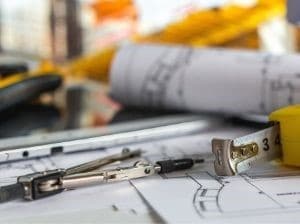
None of us are getting any younger; most people plan for their retirements so that they can find a safe and healthy retirement community. Although, with so many people aging, many senior living communities are opening additional facilities or expanding on their current building. Unfortunately, expanding or building a senior living facility isn’t quite as simple as constructing other buildings. As the owner or administrators of a retirement community, you know there are specific characteristics of a retirement community. Before you begin building, we discuss some factors to consider when building a senior living facility. Read on to learn more.
Limit floors, stairs, and uneven surfaces
Trips and falls are among the leading causes of senior injuries. While some of the tenants at your facility might do stairs without any problems, the best solution is to avoid stairs as much as possible. If at all possible, your facility should be one floor to reduce the chances of someone falling. Additionally, you’ll want to make sure the floors are as flat as possible. Avoid even slight ramps to keep the surface consistent—otherwise, someone could fall.
Know your market and what they want
You might already know the demographic and preferences in your market if you’re expanding on an existing building. However, for those of you who are building a brand-new facility, you should always conduct market research for several reasons. First, for business purposes, you’re going to want to know who your customer is, their demographics, and their average wealth. On the other hand, you need practical information to build a great community. Every local community is different; some local areas have a lot of places to walk and you should always encourage seniors to exercise. Moreover, it’s important to offer at least some amenities like a barbershop and salon or a library to keep your residents satisfied.
Take technology into consideration
Technology is a vital factor for everyone at the facility. The staff will need a reliable internet connection to perform daily operations including billing, answering phones, and even marketing. Before construction begins, many building regulations require plenum Ethernet cables in certain areas of the building to reduce toxic chemicals in the event of a fire. Additionally (and similar to amenities), many seniors will want TVs, whether that’s in their room or in a living space somewhere in the facility. Lastly, while many seniors don’t care about technology as much as younger people do, they still might want the option to use a computer. Having a few community computers can help residents practice their computer skills, post on their social media accounts, and surf the web.
Of course, you’ll want to include safety measures into your plan, such as fire extinguishers, smoke detectors, and AED stations. Additionally, you should ensure you can monitor all your residents with cameras in commonplaces. With aging individuals, it’s always better to be safe than sorry, and taking the mentioned factors into considerations will help you build a great community.